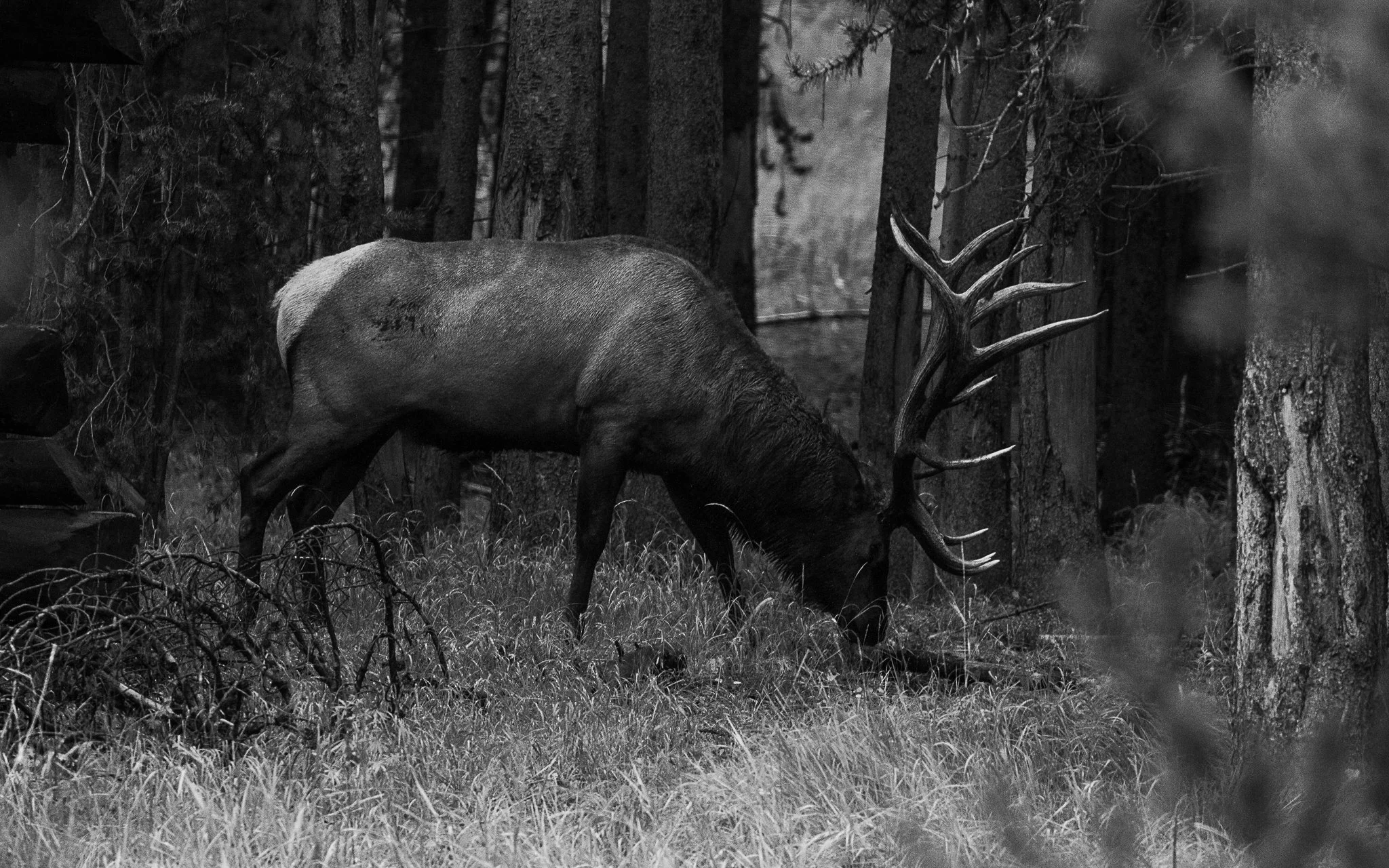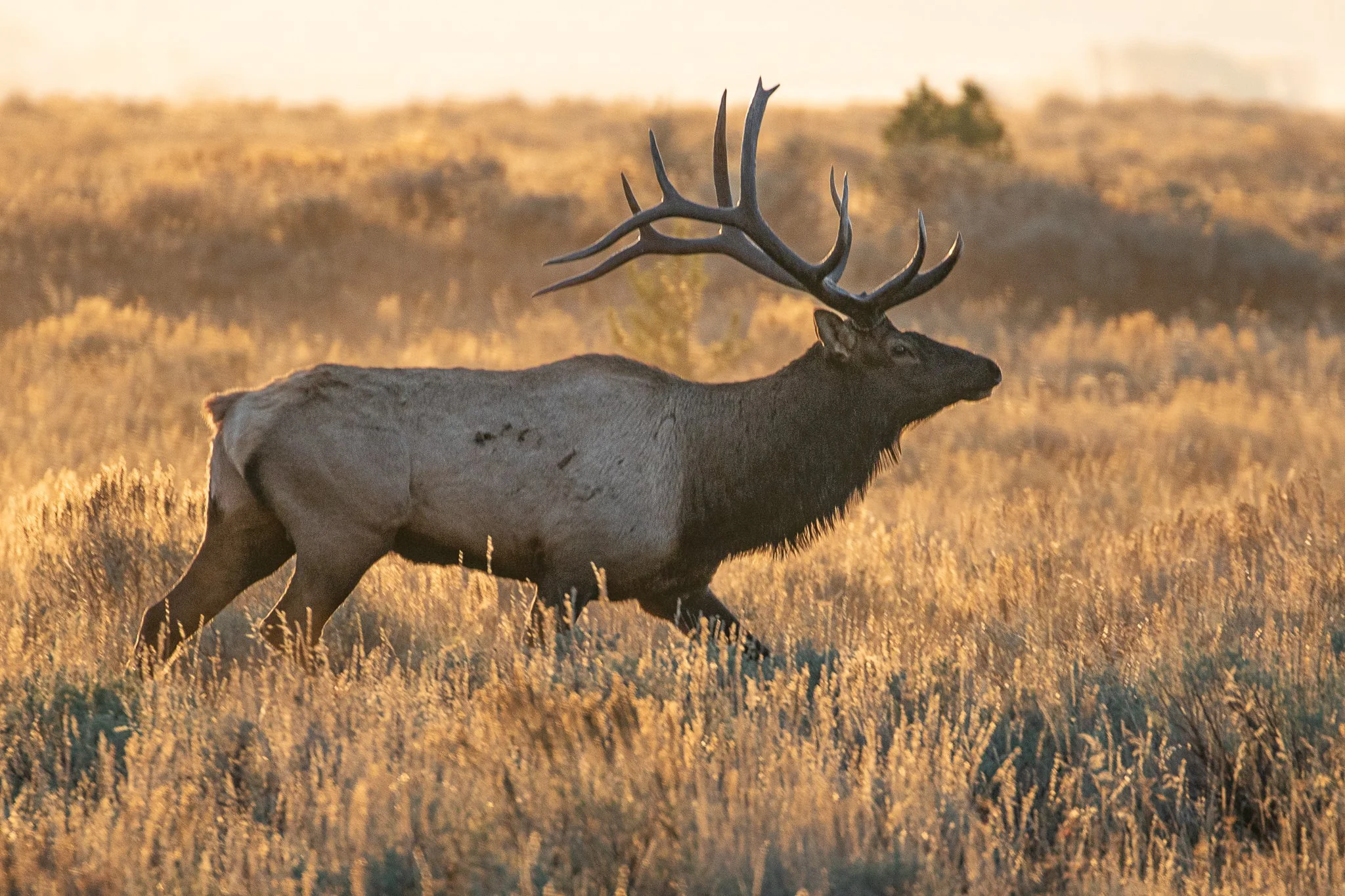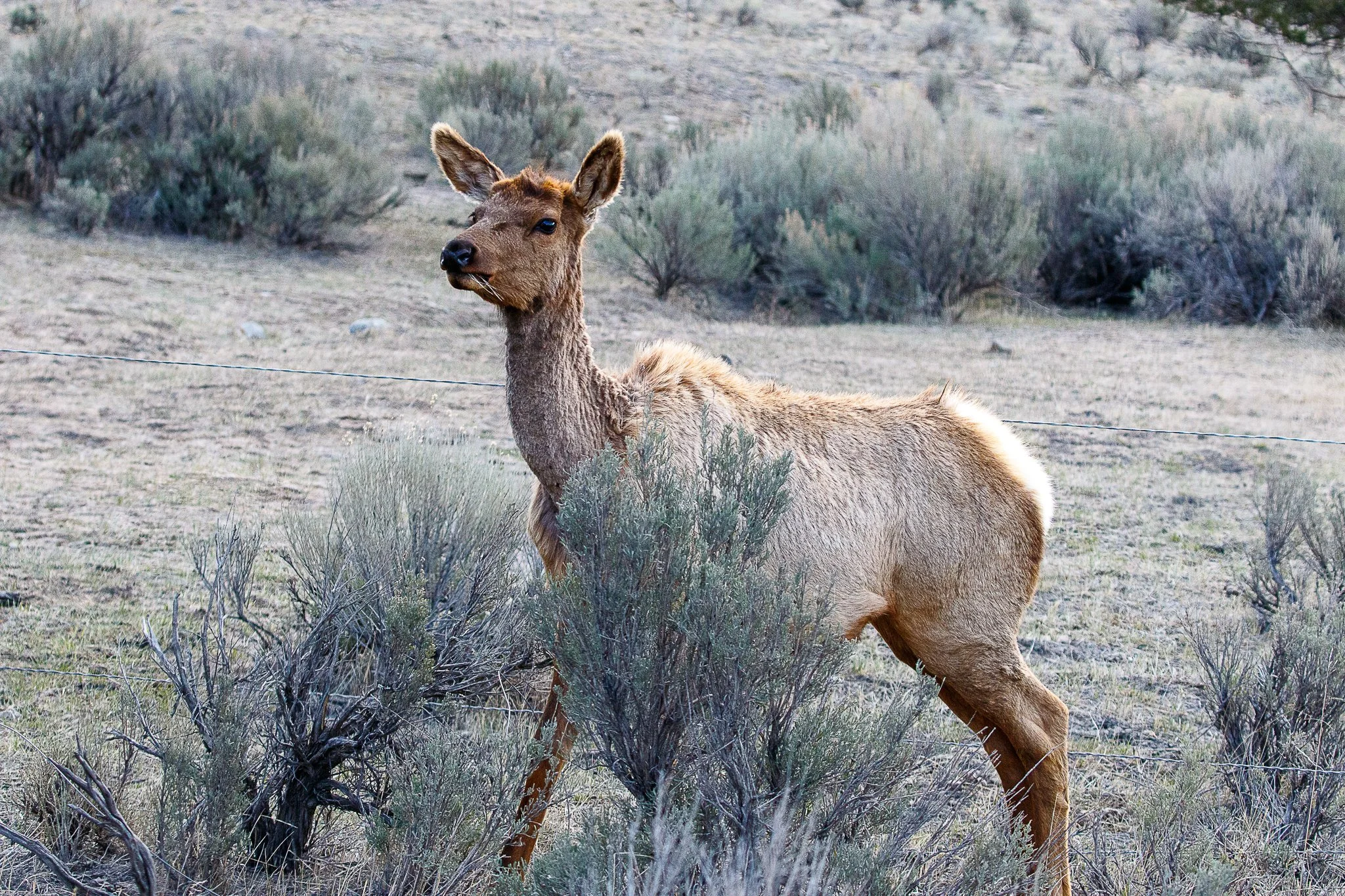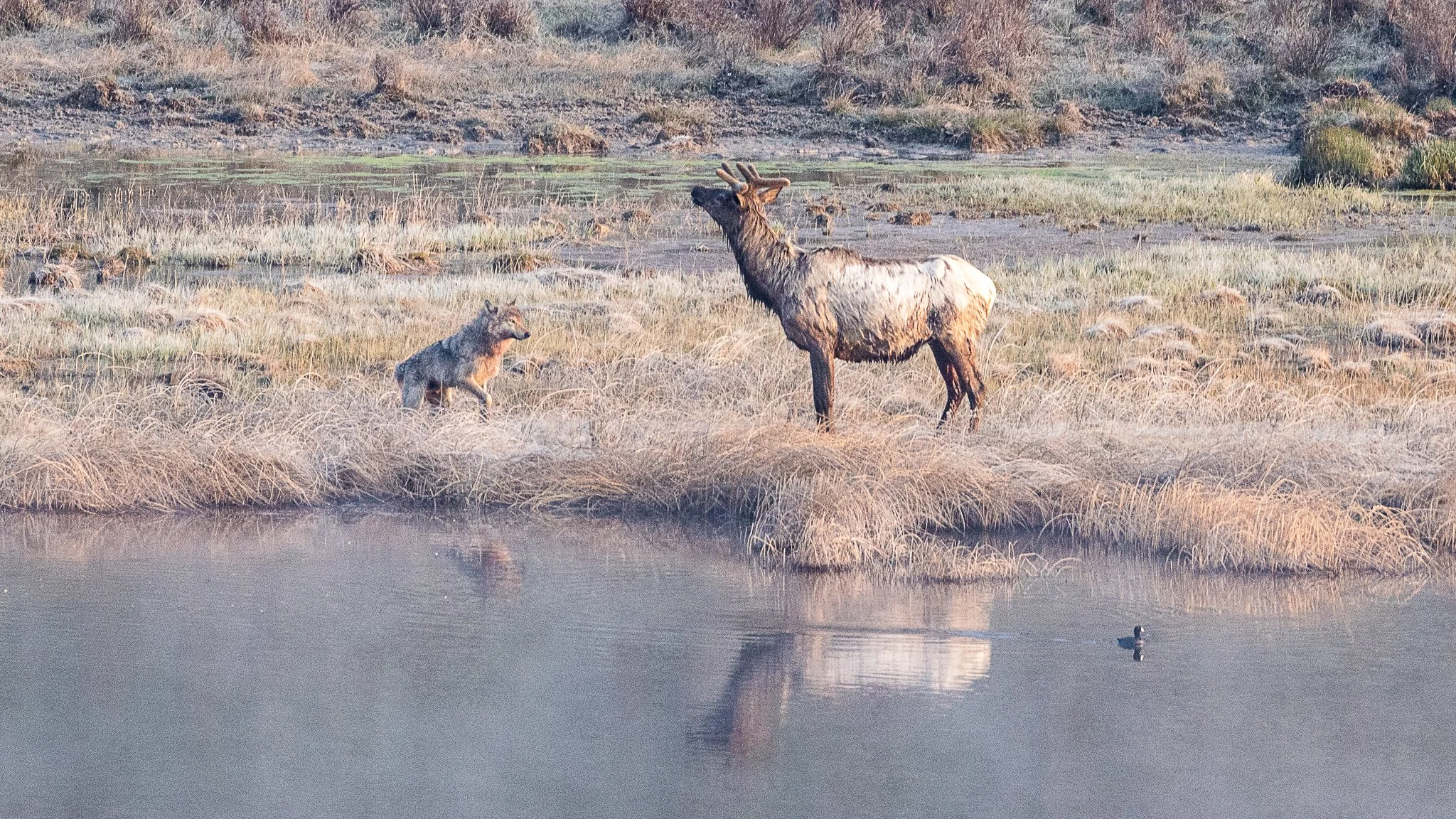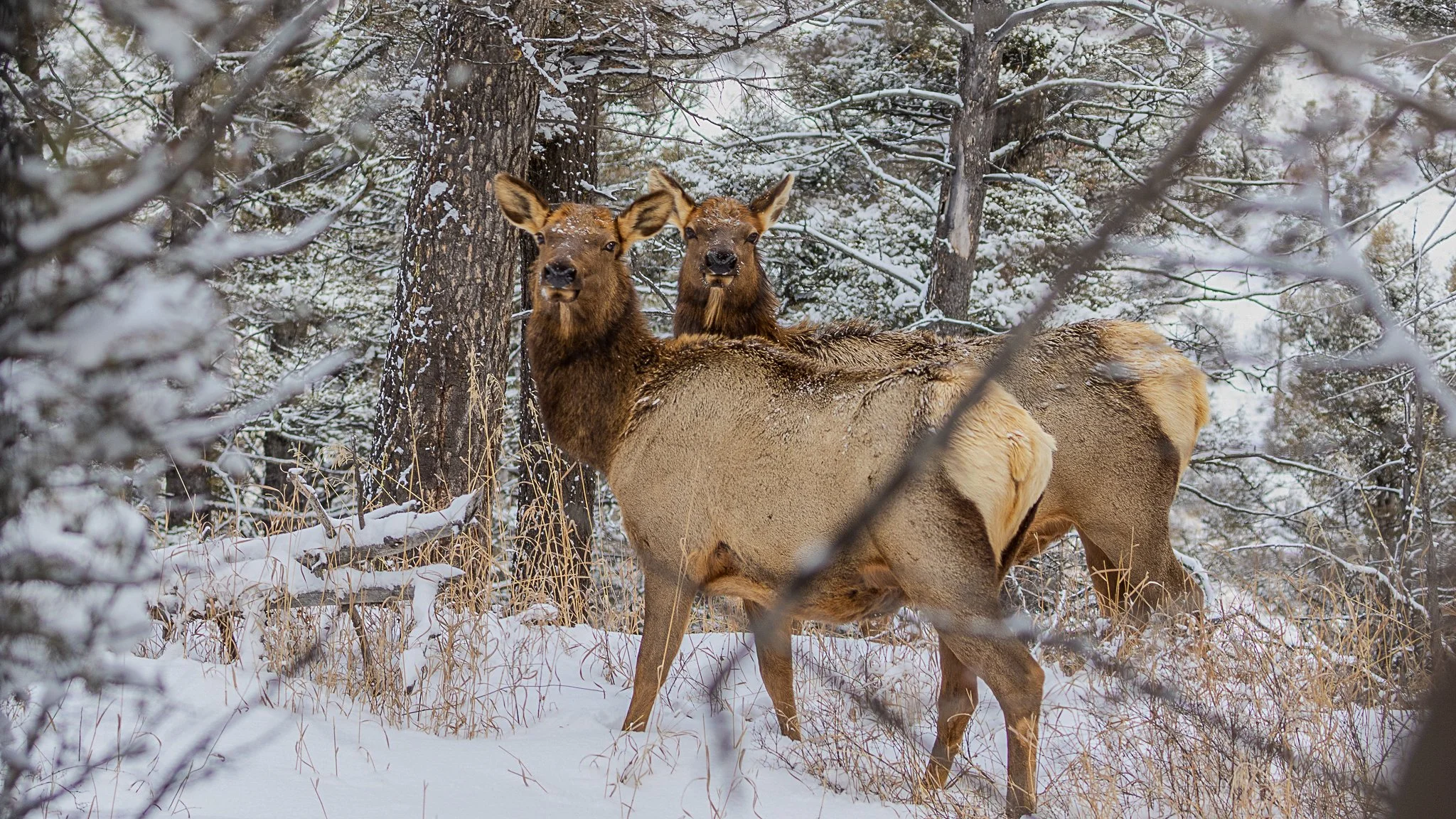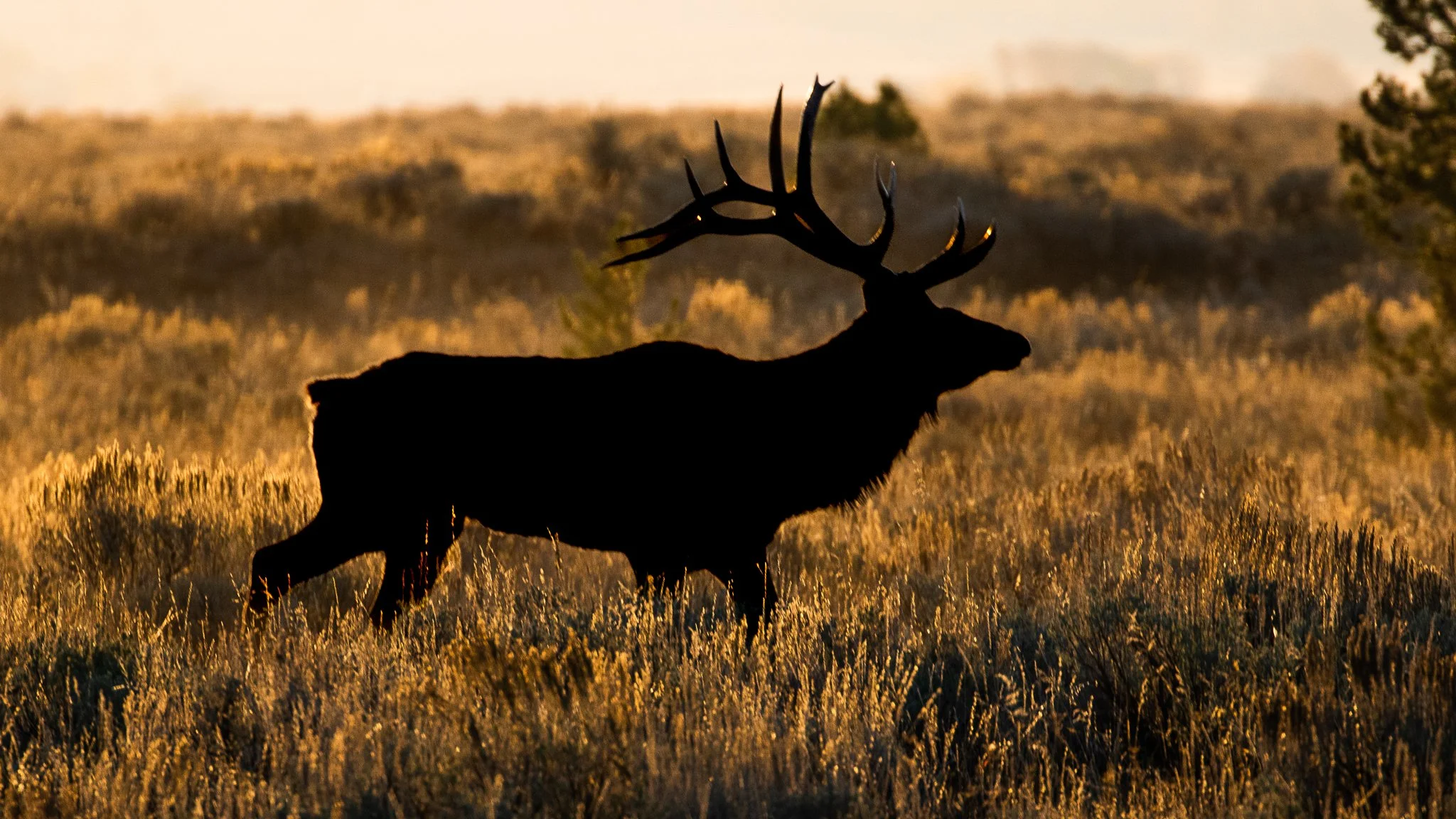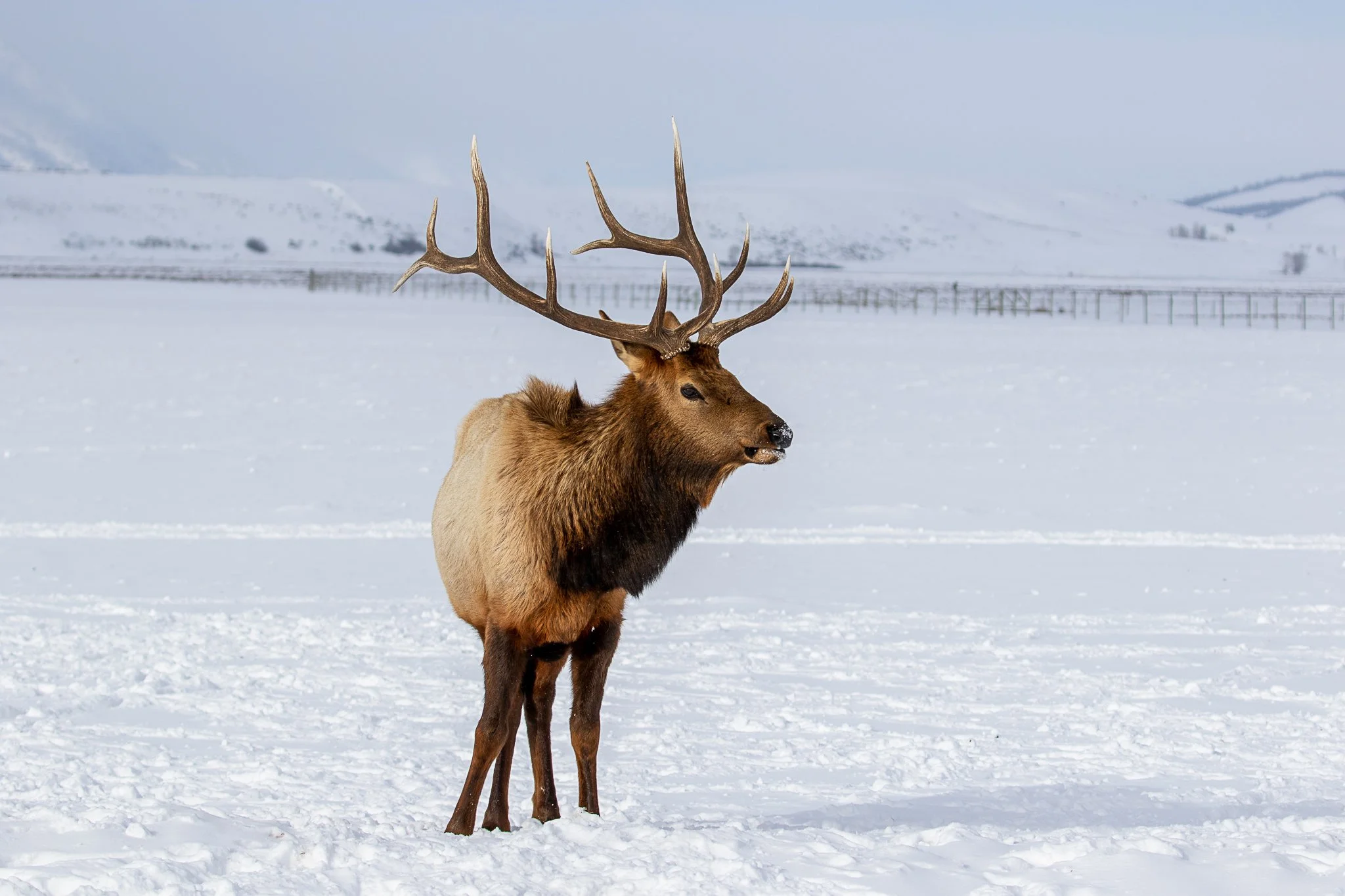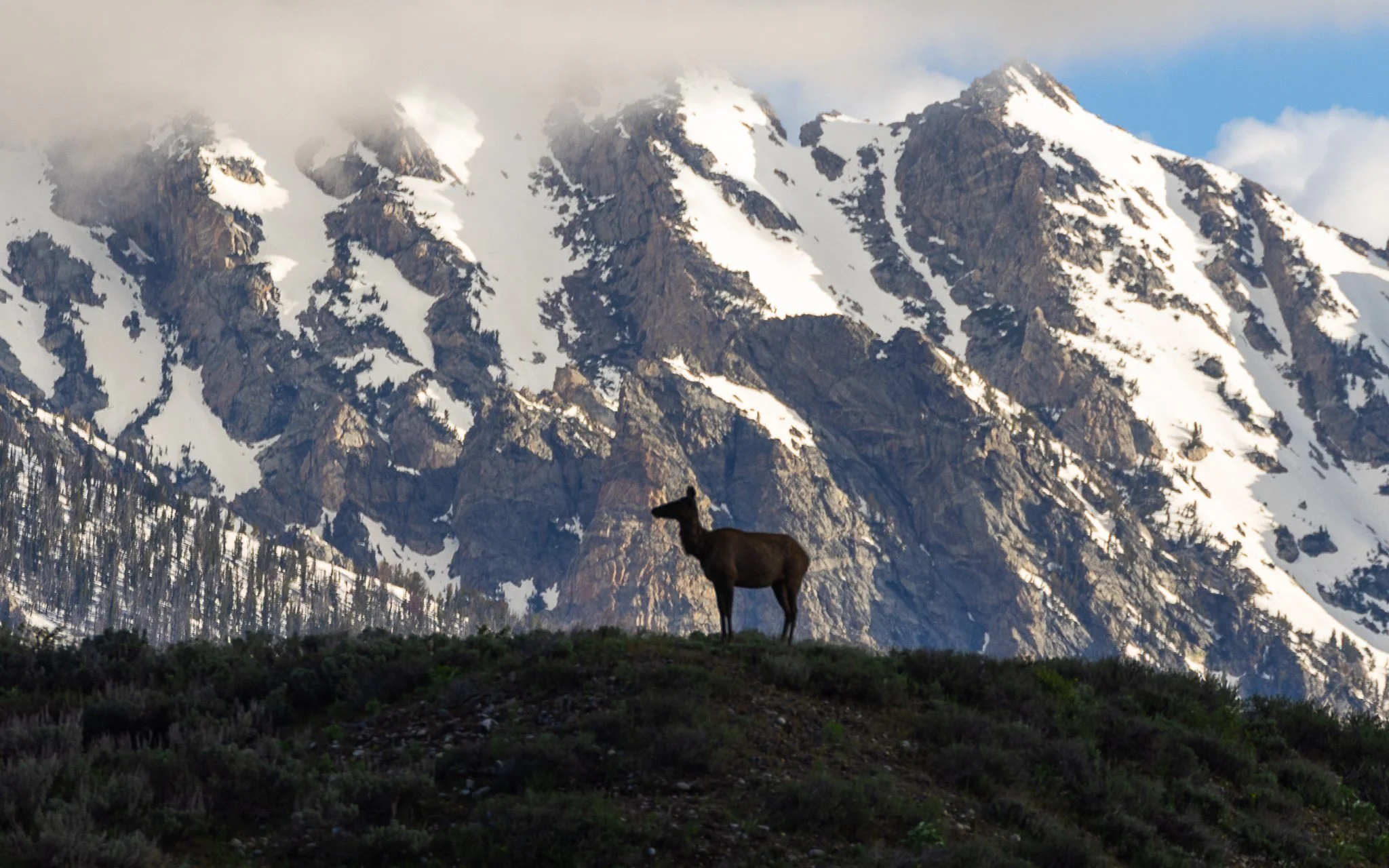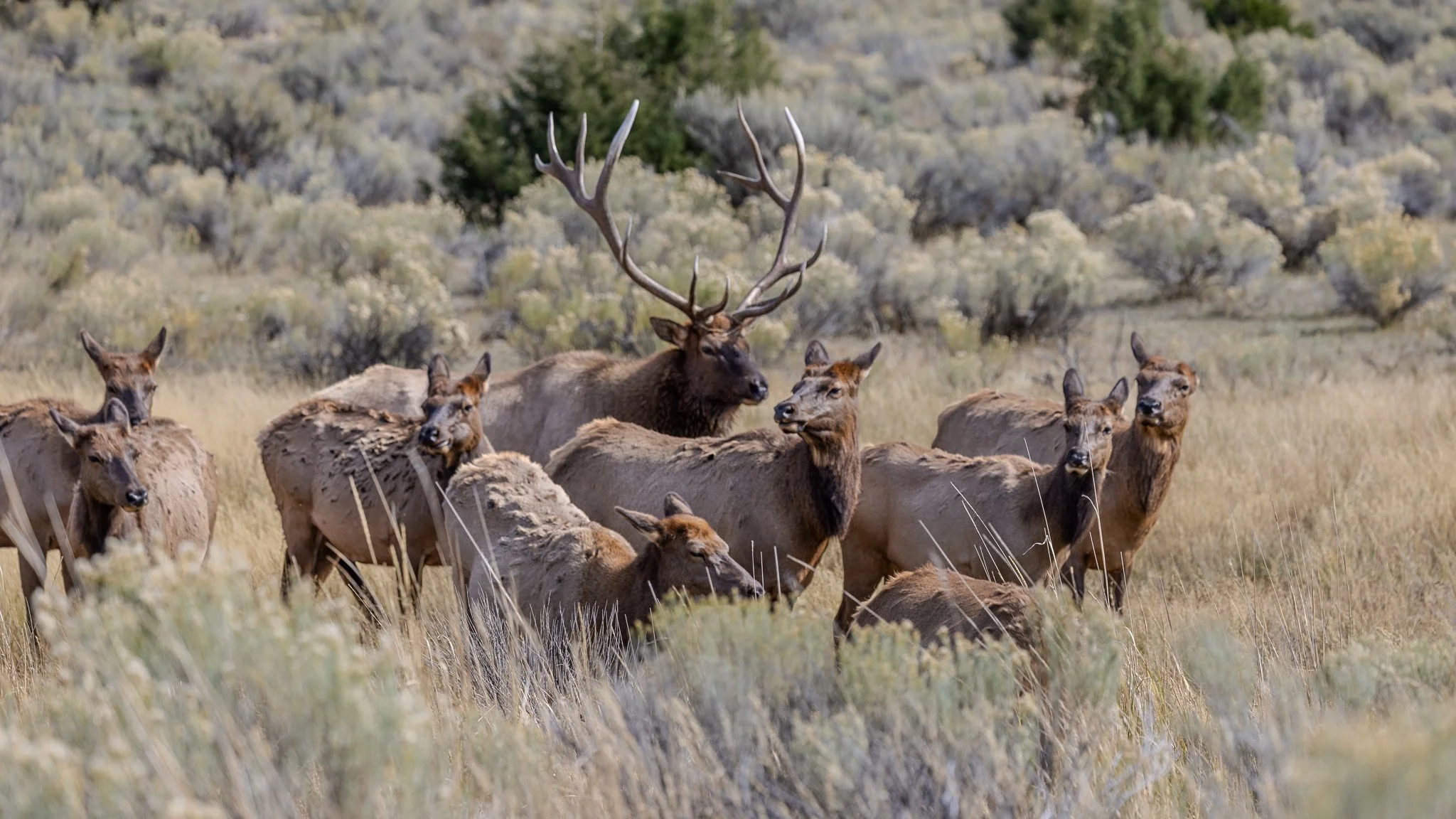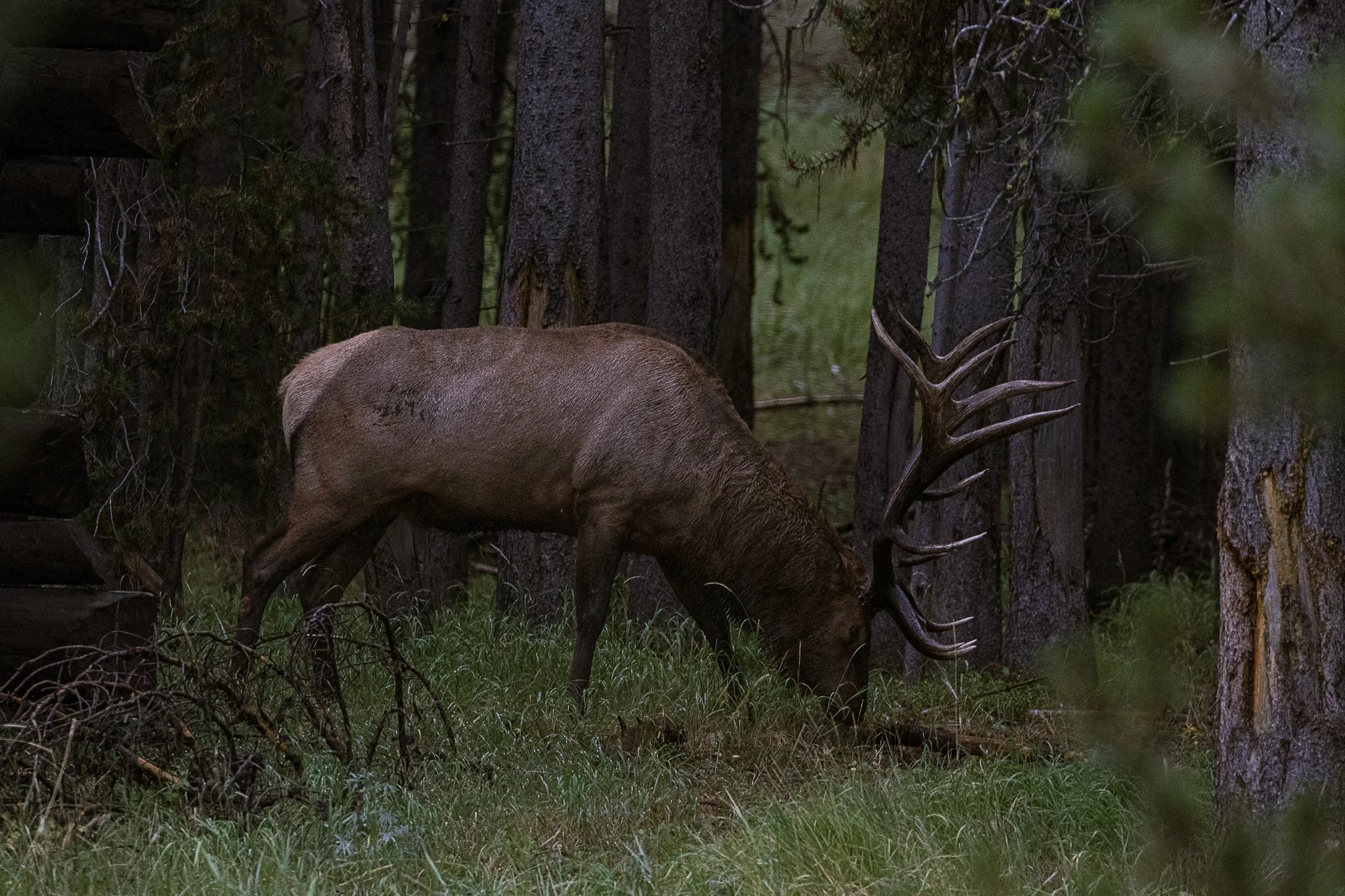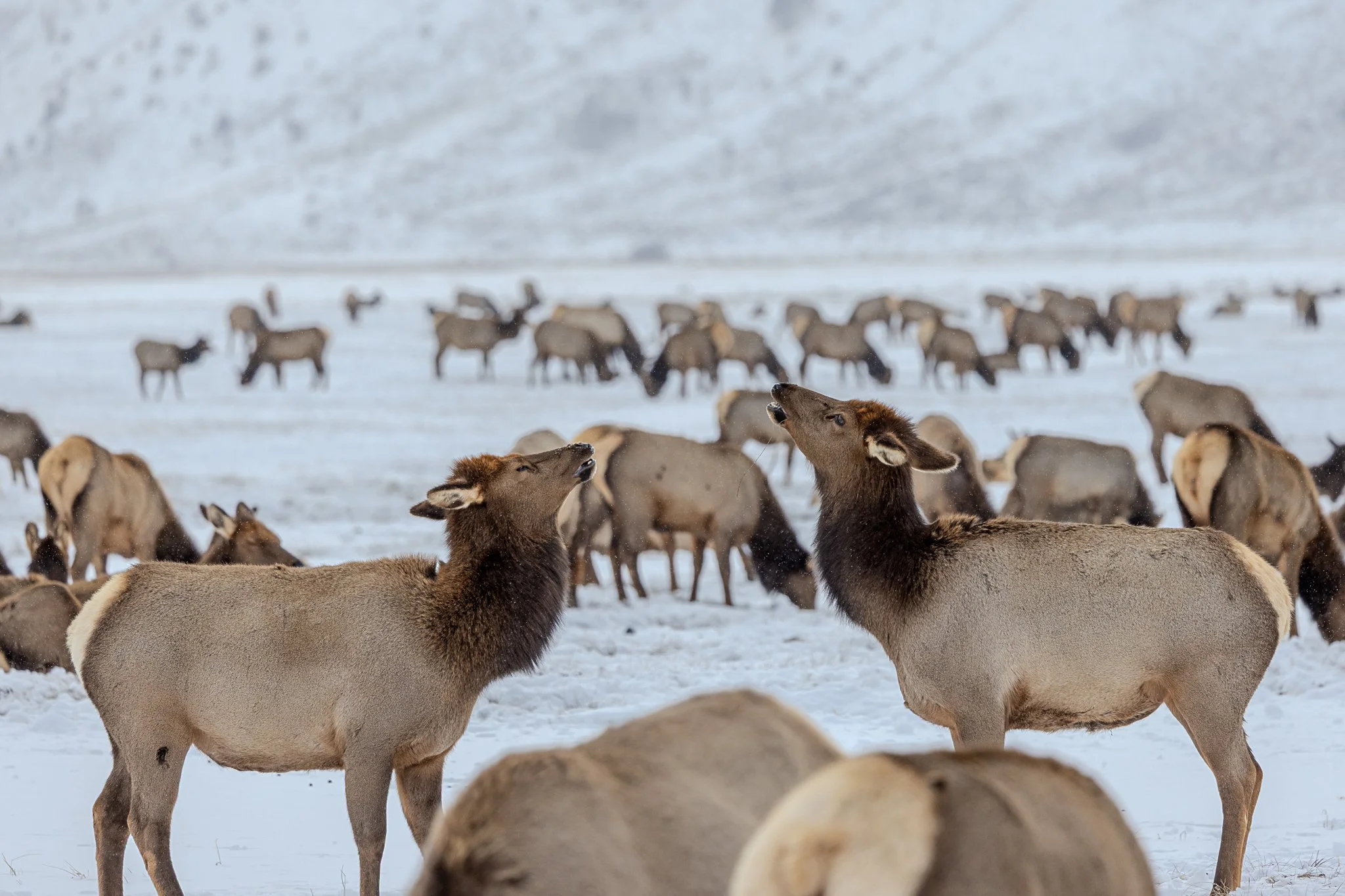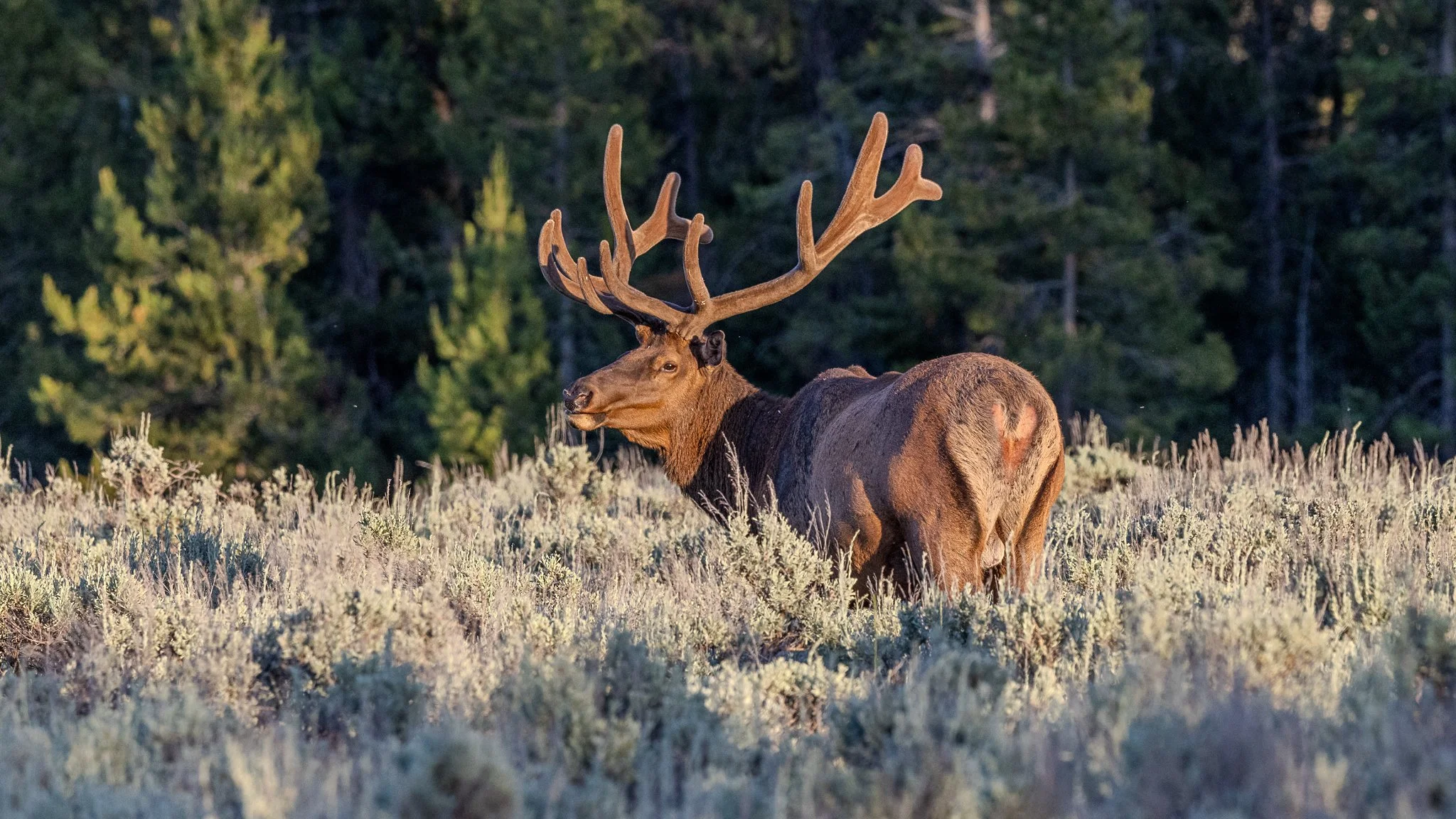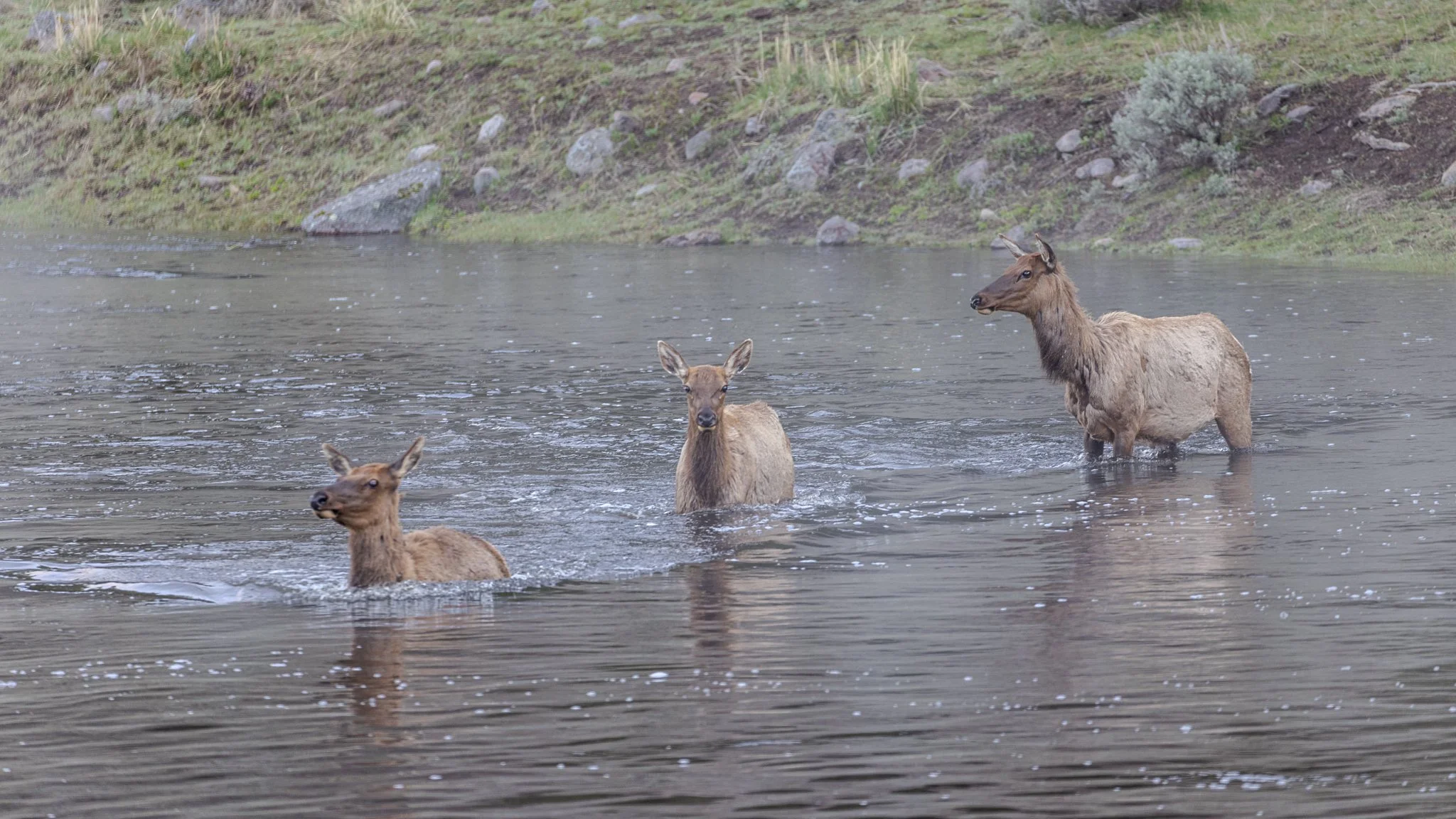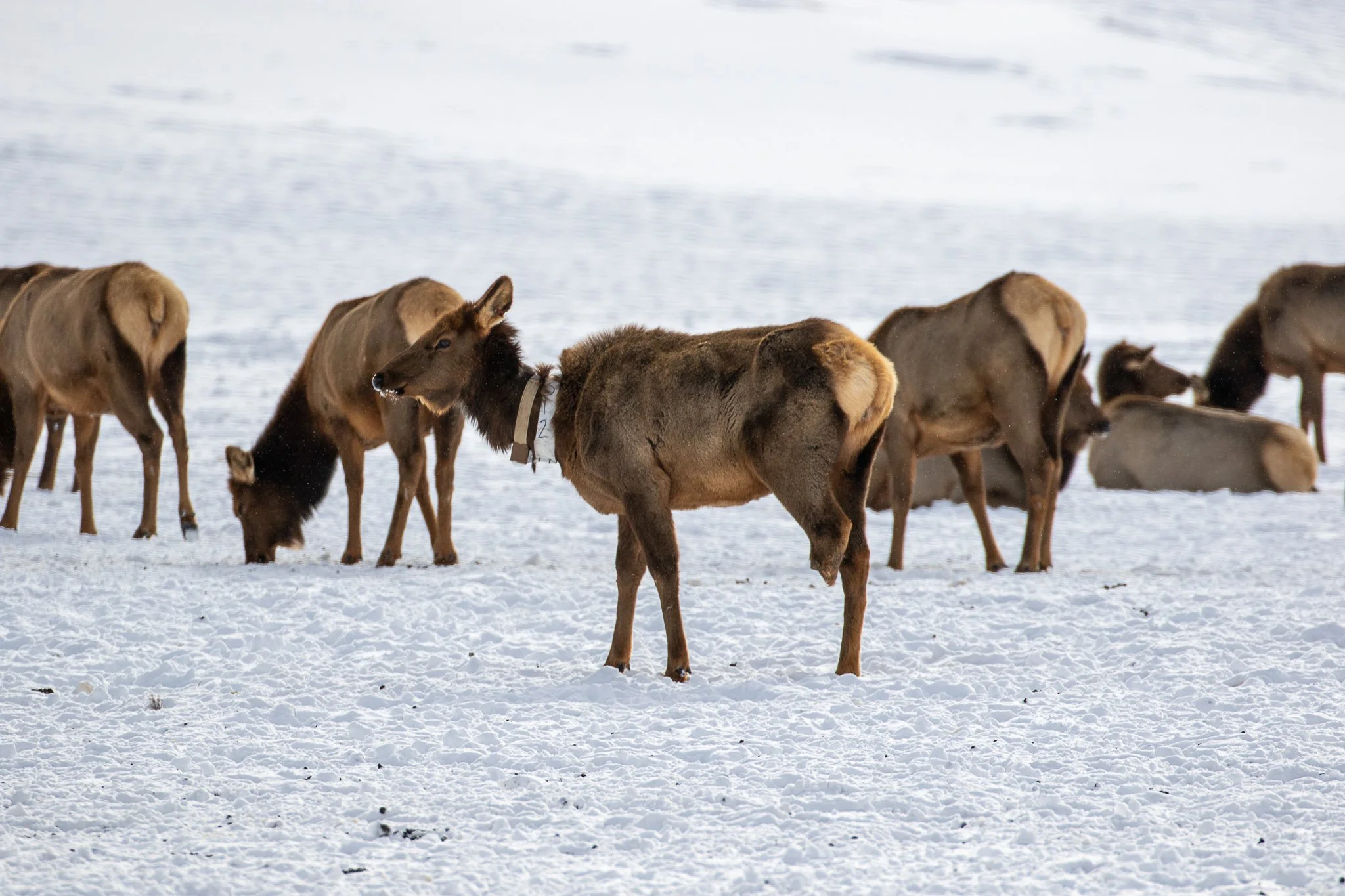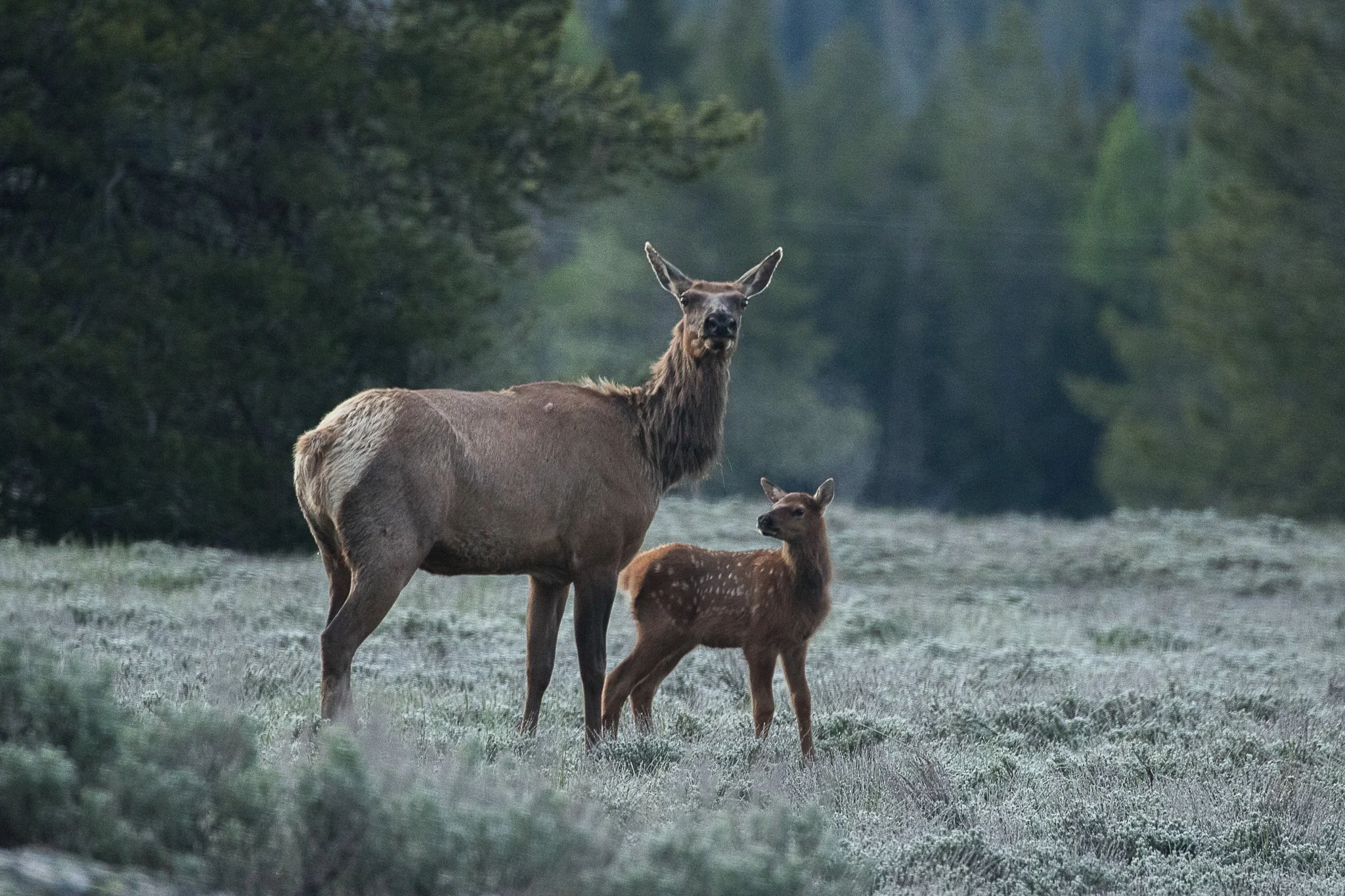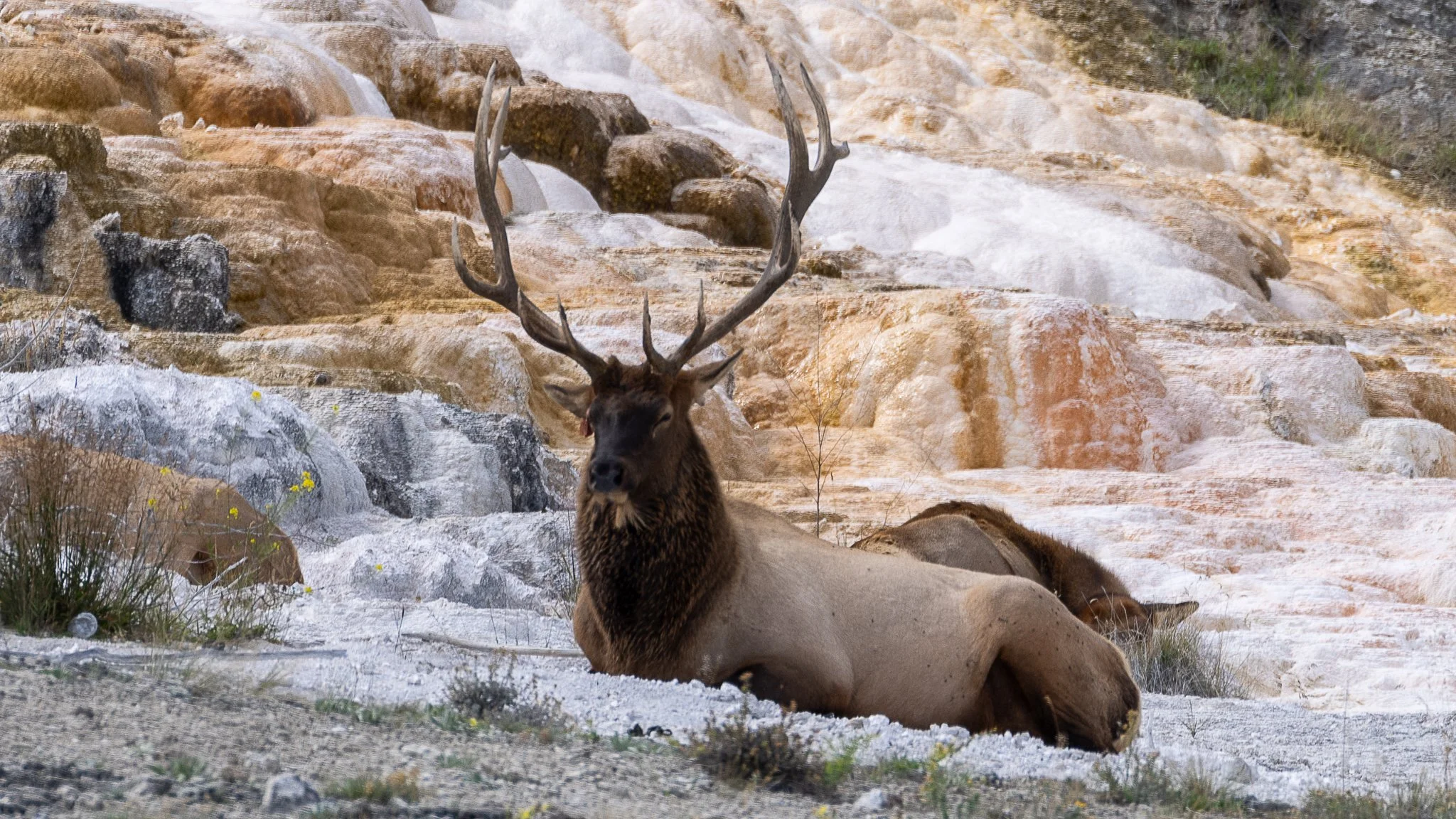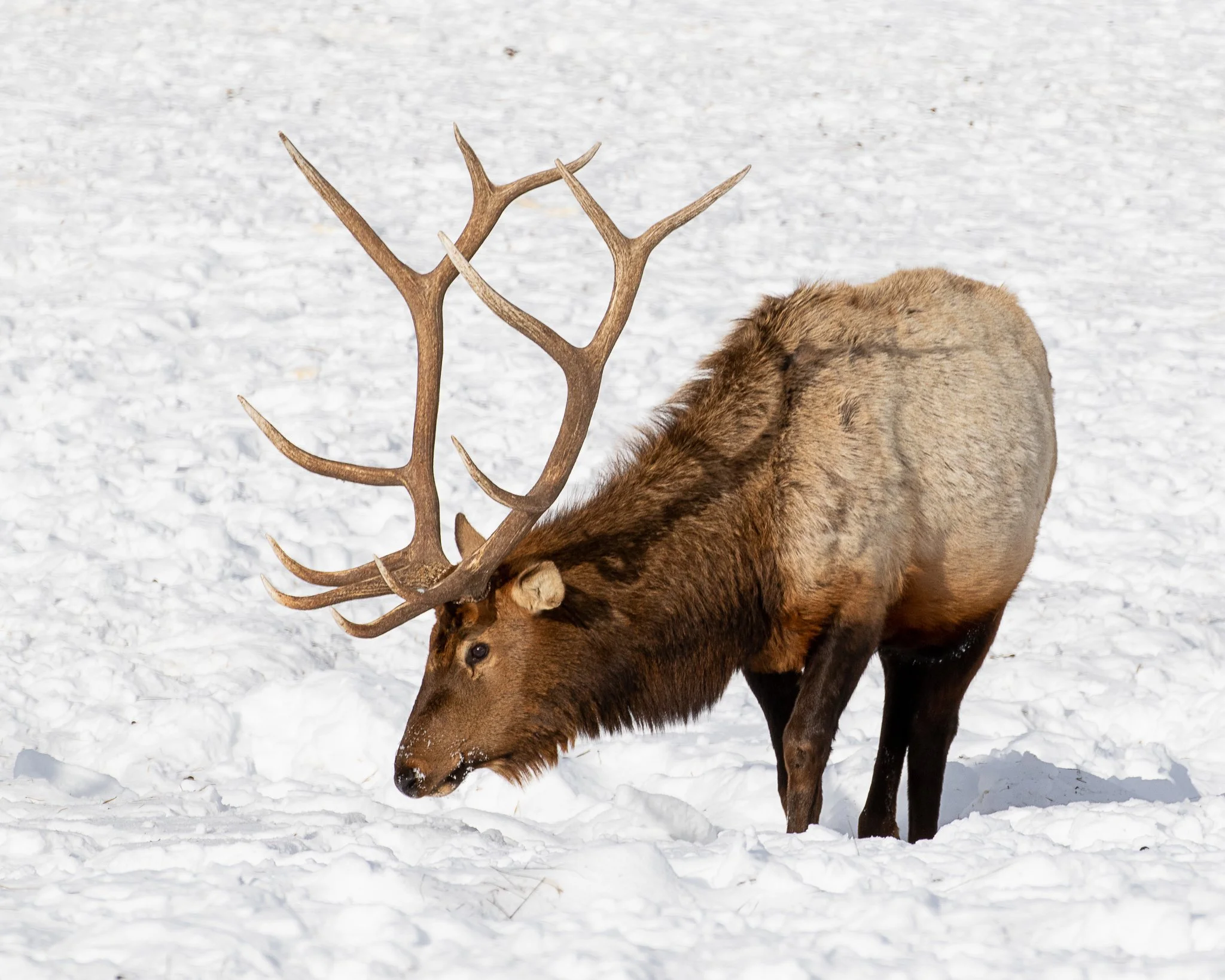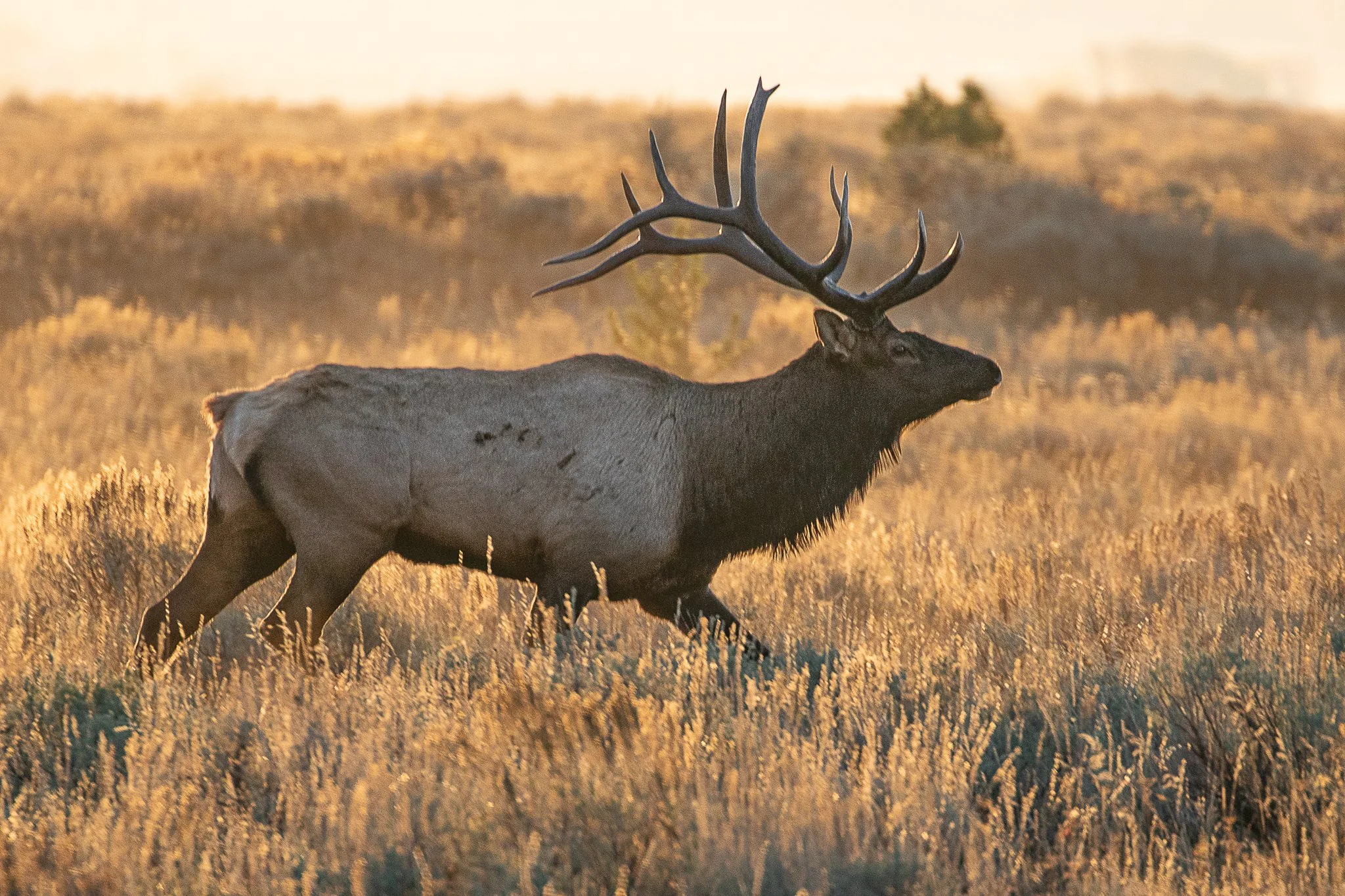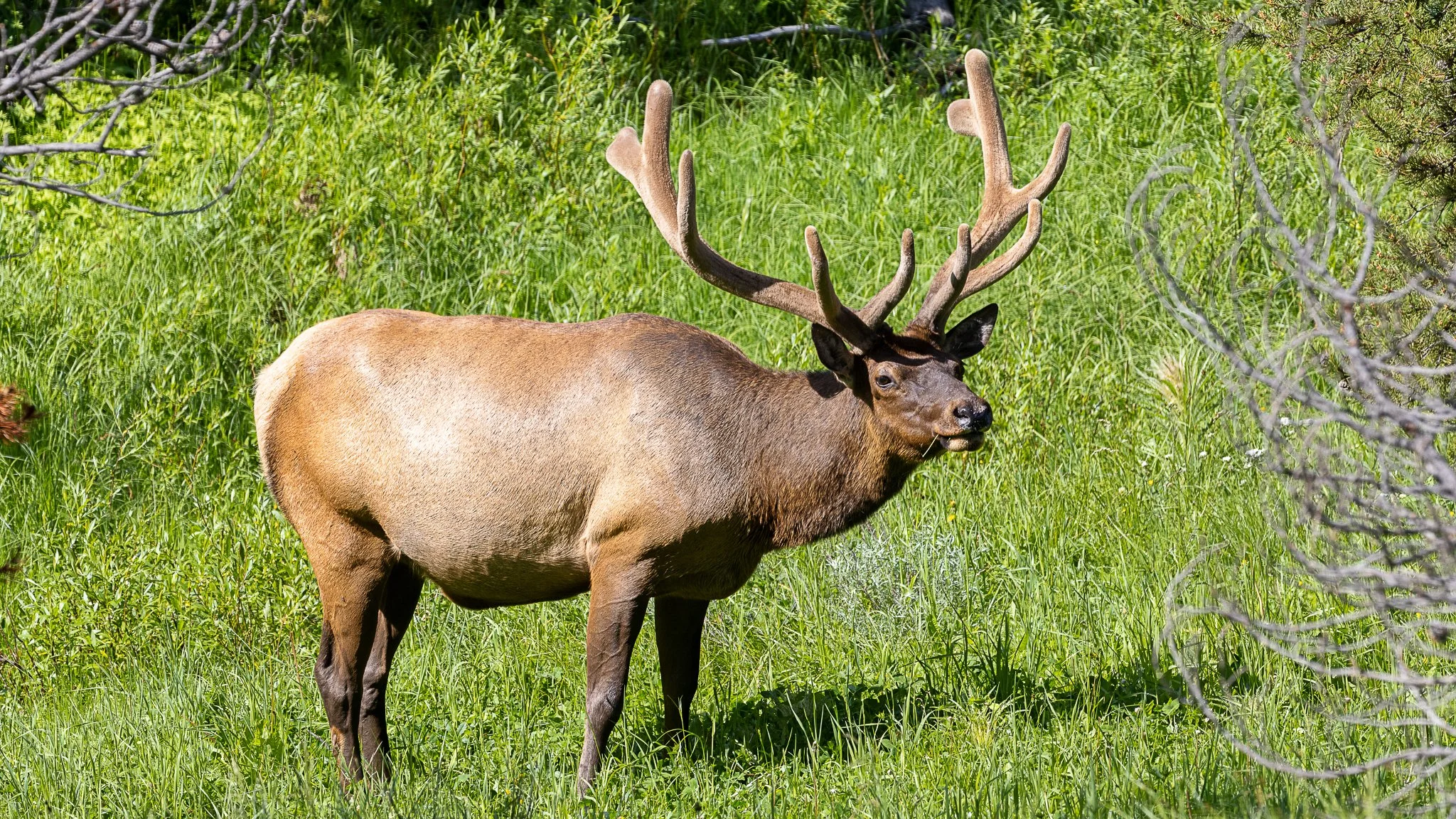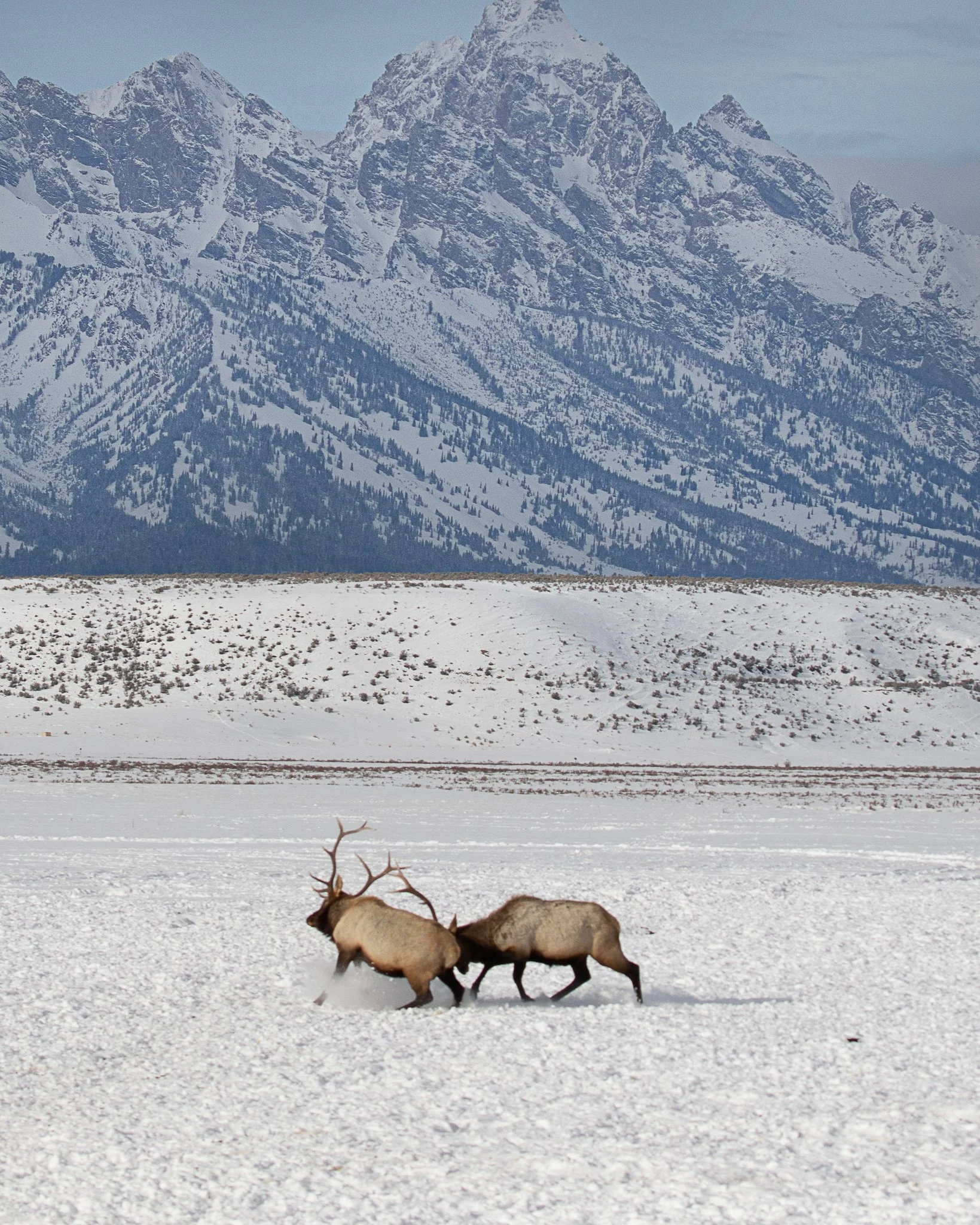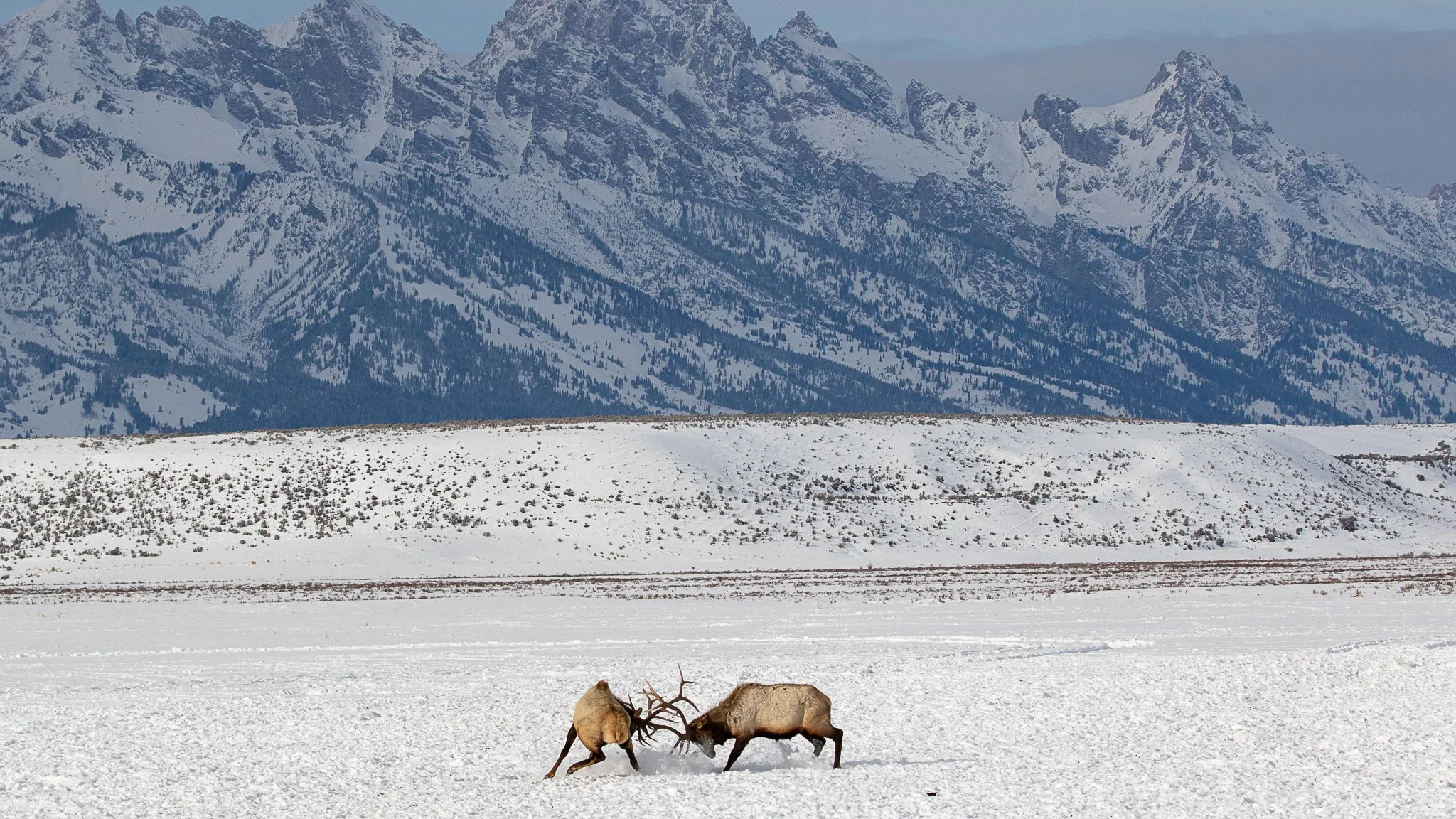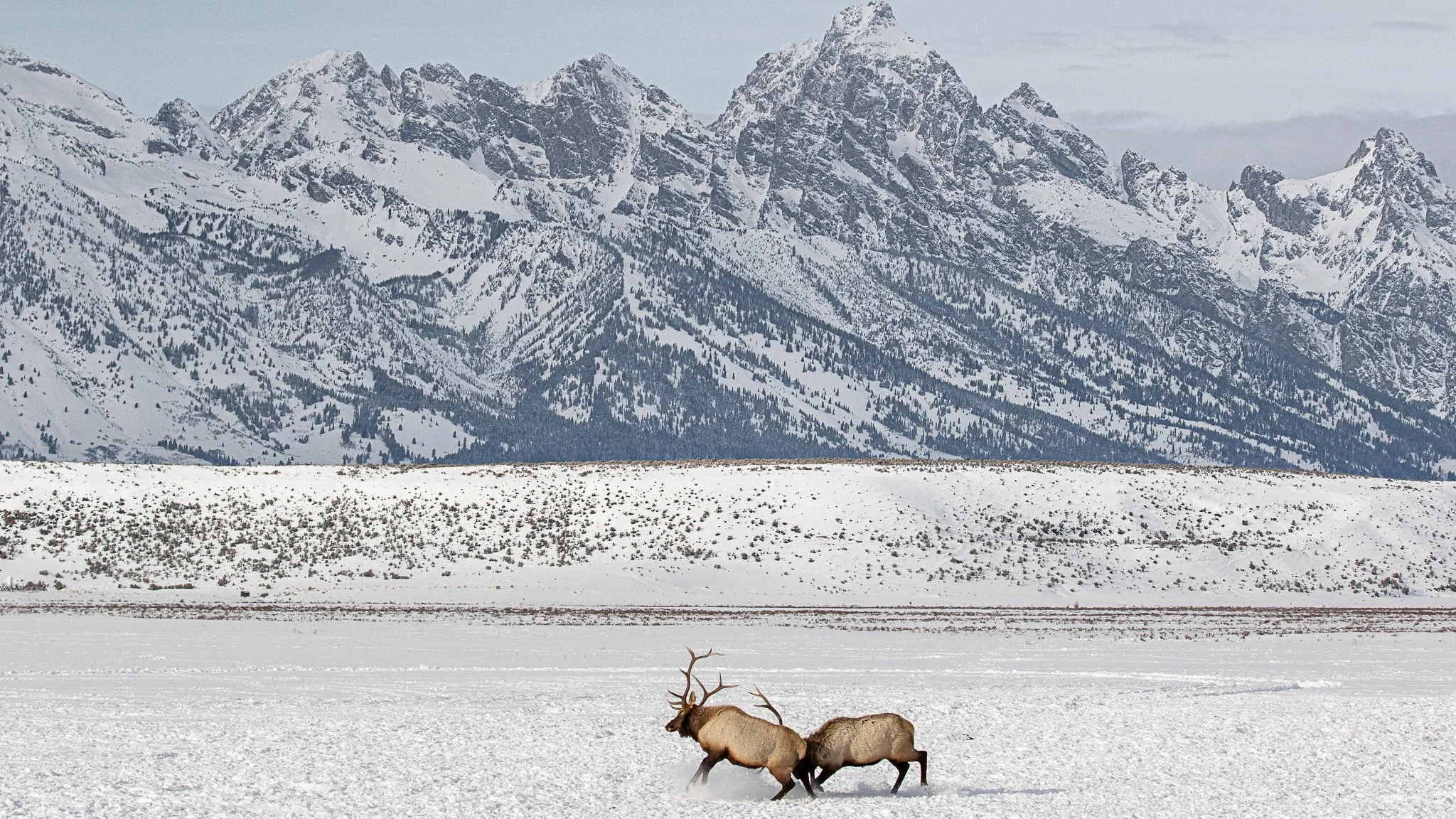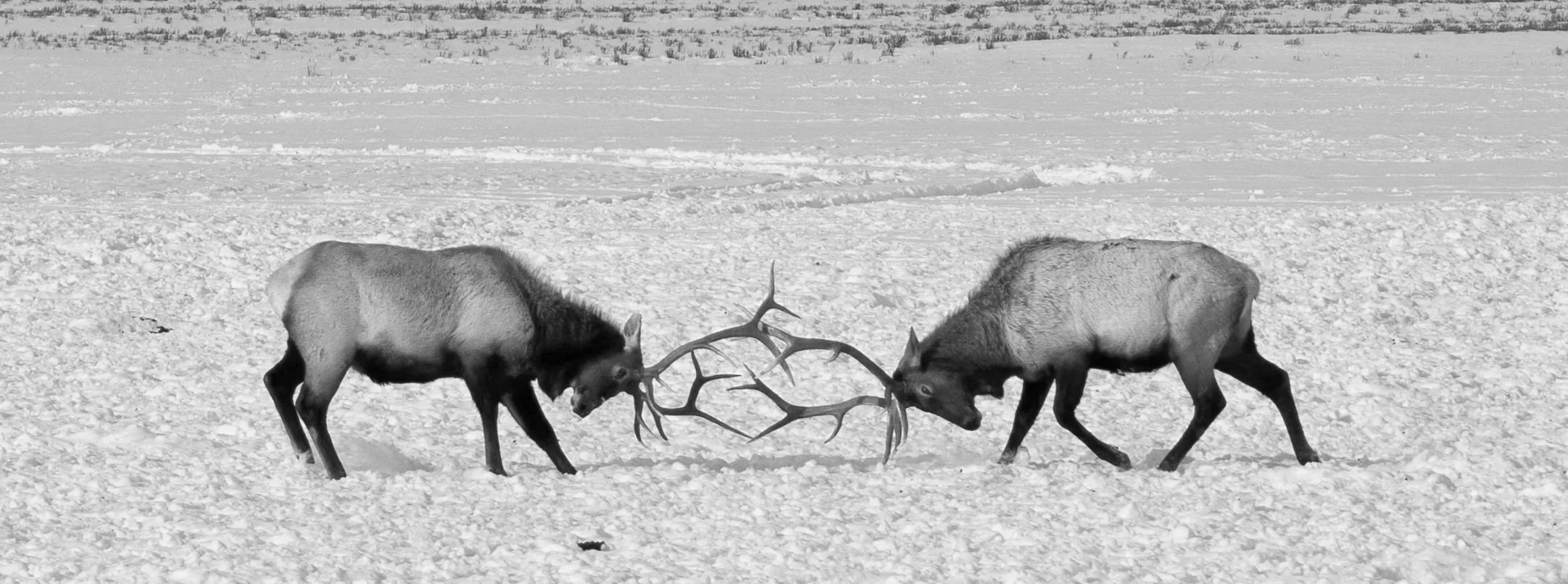
Rocky Mountain Elk
Size:
Rocky Mountain elk, Cervus canadensis nelsoni, are remarkable creatures distinguished by their massive antler growth, the largest among elk subspecies. Bulls typically weigh between 700 and 800 pounds as the rut begins. In contrast, cows are smaller, generally weighing 400 to 500 pounds and standing around 4 to 5 feet tall at the shoulder. Their impressive size and majestic antlers make the Rocky Mountain elk a notable species in North American wildlife.
Diet:
Elk have a versatile feeding strategy, consuming a combination of grasses and woody plants that varies seasonally. During the summer months, they primarily feed on forbs and grasses, which are more abundant and nutritious. As winter approaches and these resources become scarce, elk shift their diet toward woody vegetation such as twigs and bark.
Differences in diet selection also arise from biological and ecological pressures. Bull elk seek out higher quality food in locations where competition is lower but the threat of predators is higher. This risky foraging behavior allows them to gain the necessary body mass and strength for successful mating competitions. Conversely, female elk tend to choose safer foraging sites with less nutritious food, emphasizing survival and reducing their exposure to predators. This sexual dimorphism in feeding strategy reflects a balance between nutritional needs and predation risk influenced by the elk's life history and reproductive roles.
Mating:
Like many North American ungulates, elk breed in autumn, gestate for approximately eight and a half months during winter, and give birth in spring when vegetation is lush and nutrient-rich. This reproductive cycle aligns optimally with their nutritional needs, as female elk require the most energy during lactation. Meanwhile, bull elk face their greatest physical demands during the breeding season, known as the rut, in September. During this time, bulls engage in intense activities such as bugling to attract females, defending their territory against rival males, and mating. These strenuous efforts can cause a bull to lose up to 25% of its body weight throughout the rut.
Population:
The population of Greater Yellowstone Ecosystem (GYE) elk has long been a focal point of debate and management challenges. Since the park's establishment, elk numbers have fluctuated due to a complex interplay of factors. Market hunting in the early days drastically reduced their population, prompting the introduction of protective measures which helped their numbers rebound. However, ongoing human activities such as development and ranching have exerted downward pressure on elk populations once again. The creation of elk feeding grounds provided artificial support, temporarily sustaining and increasing their numbers. Government culling programs were then implemented to control herd size, leading to further declines.
This cyclical pattern, marked by rises and falls, illustrates the difficulty in maintaining a stable elk population in GYE. It underscores a broader ecological truth: interventions in natural systems rarely have isolated consequences. Each action to modify elk numbers reverberates through the ecosystem, affecting predator-prey dynamics, vegetation patterns, and even the livelihoods of human communities linked to the landscape. The GYE elk population serves as a vivid example of how human influence creates continuous oscillations in nature rather than equilibrium, reminding us of the intricate balance required to sustain wild ecosystems.
Aggression between bull elk peaks during the September rut, but during harsh winters, competition for resources can cause tempers to flare. Elks' gregarious nature and the increased conflict caused by overwintering in large groups mean that elk retain their antlers longer than most other deer species.
These elk, located on the National Elk Refuge, benefit from one of several feed grounds in the Rocky Mountain region. The supplemental feeding programs on such refuges have significantly reduced elk mortality rates during harsh winters, from approximately 18% down to just 1%. By subsidizing their diet, wildlife managers have successfully bolstered elk populations, enabling increased opportunities for consumptive recreation such as hunting.
The practice of supplemental feeding for elk populations indeed poses complex challenges. While feeding can support elk survival during harsh winters and uphold hunting traditions vital to many families, it also creates conditions conducive to disease spread among concentrated herds. Diseases like brucellosis, hoof rot, and chronic wasting disease threaten not only elk health but potentially broader ecosystem stability.
On the other hand, choosing not to feed elk can lead to increased foraging on private lands, causing property damage and economic hardship, and may result in higher natural mortality during severe winters. These competing concerns highlight the delicate balance wildlife managers must maintain between intervention and allowing natural processes.
This scenario underscores a broader philosophical question within wildlife management: to what extent can or should humans influence animal populations before those animals lose their wildness? As human activities increasingly shape animal habitats and behaviors, defining what it means for wildlife to be truly wild becomes more complex. The management of elk populations exemplifies this tension between human needs, ecological integrity, and the autonomy of wild species.
